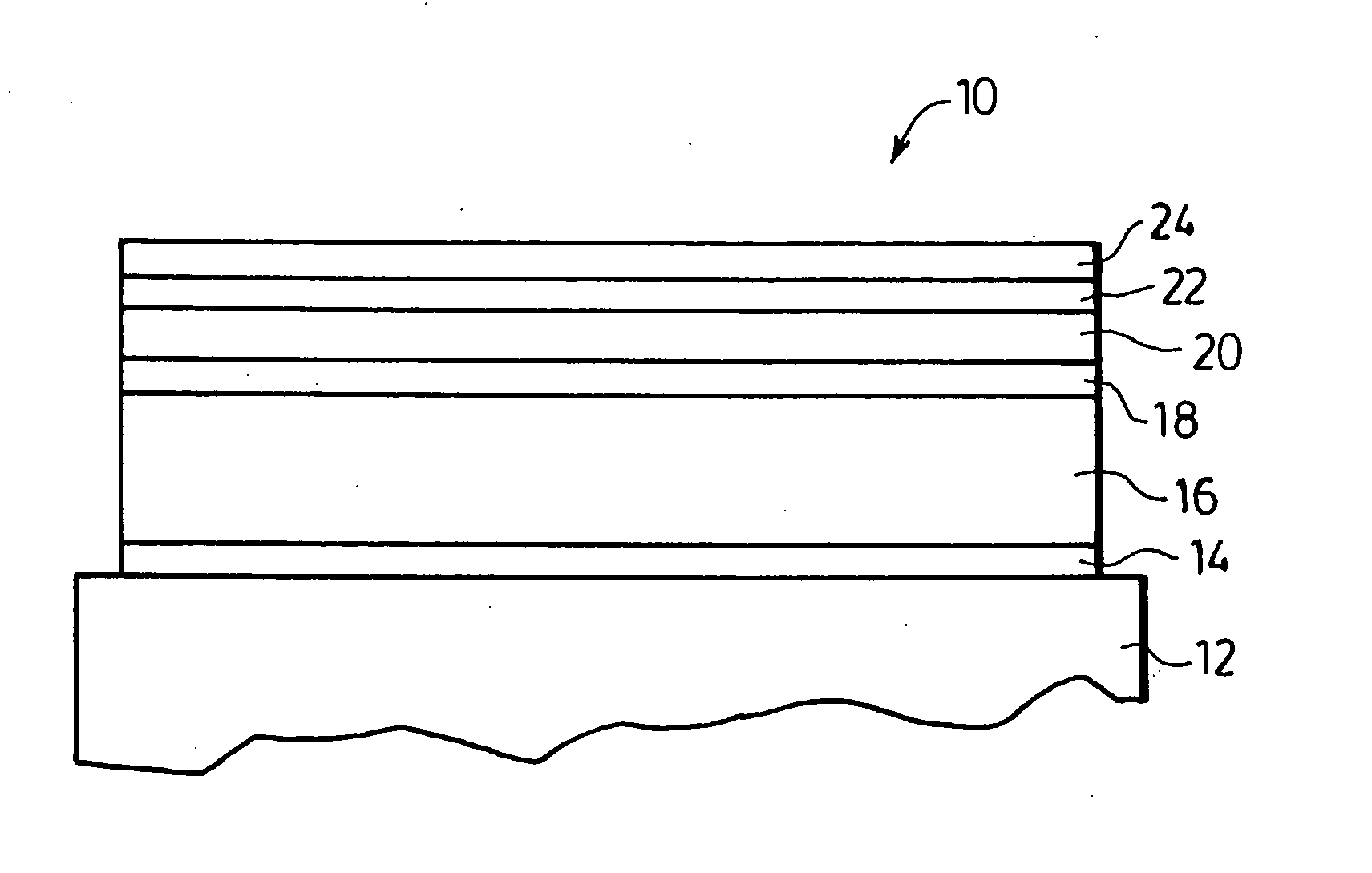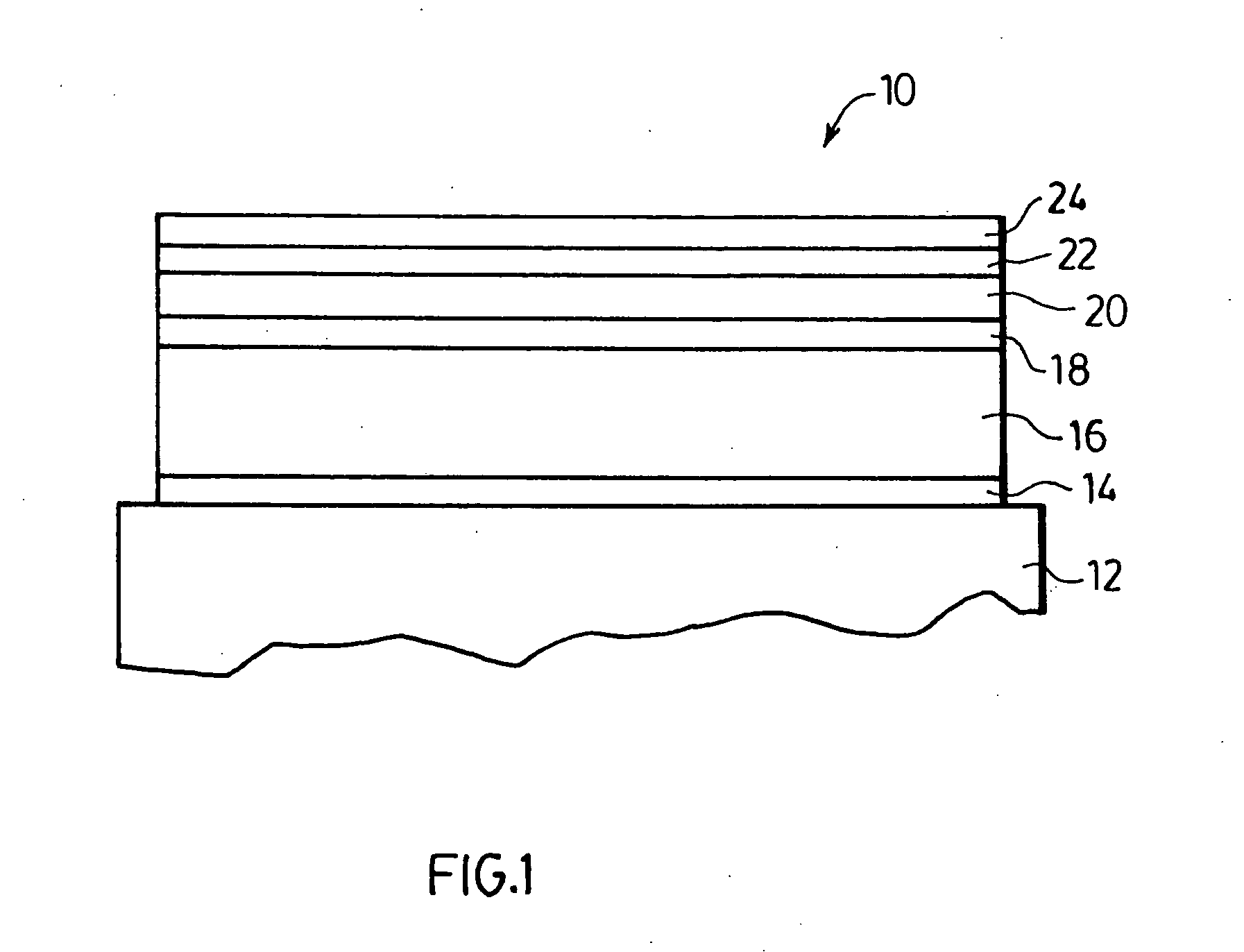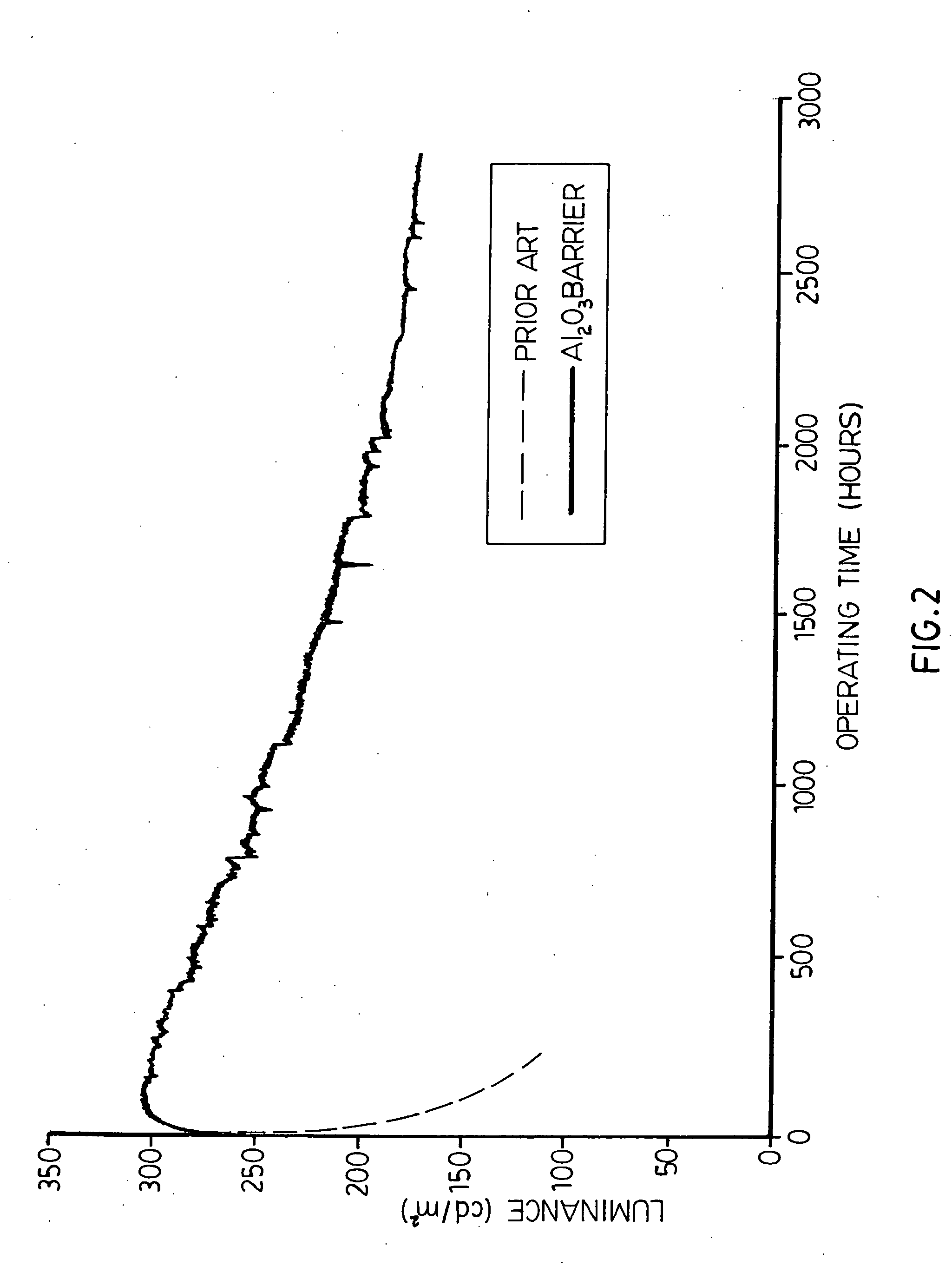Aluminum oxide and aluminum oxynitride layers for use with phosphors for electroluminescent displays
a technology of aluminum oxide and phosphor, which is applied in the direction of luminescent compositions, discharge tubes/lamp details, discharge tubes luminescent compositions, etc., can solve the problems of reducing the efficiency with which electrons interact with the activator species in the phosphor material to emit light, reducing the efficiency by which the light generated in the phosphor is transmitted from the device to provide useful luminance, and not considering providing aluminum oxide or aluminum oxynitride layers. to achiev
- Summary
- Abstract
- Description
- Claims
- Application Information
AI Technical Summary
Benefits of technology
Problems solved by technology
Method used
Image
Examples
example 1
[0051] This example serves to illustrate the performance and operating stability of devices of the prior art. A thick dielectric electroluminescent device incorporating thin film phosphor layers comprising barium thioaluminate activated with europium was constructed. The thick film substrate was comprised of a 5 cm by 5 cm glass having a thickness of 0.1 cm. A gold electrode was deposited on the substrate, followed with a lead magnesium niobate-titanate thick film high dielectric constant dielectric layer and a PZT smoothing layer in accordance with the methods exemplified in Applicant's co-pending international application PCT CA00 / 00561 filed May 12, 2000 (the disclosure of which is incorporated by reference herein in its entirety). A thin film dielectric layer of barium titanate, with a thickness of about 120 nanometers, was deposited in accordance with the methods exemplified in the Applicant's U.S. Pat. No. 6,589,674 (the disclosure of which is incorporated by reference herein ...
example 2
[0054] This example serves to illustrate the performance and operating stability of devices of the invention in comparison to that of the prior art of example 1. A device was constructed similar to that of example 1, except that an aluminum oxide layer was deposited on the barium tantalate layer prior to phosphor deposition. The luminance data for this device is also shown in FIG. 2 and shows an initial luminance of about 220 candelas per square meter followed by an increase in luminance during the initial hours of operation, followed by a gradual loss of luminance. The luminance after 2800 hours of operation was still about 140 candelas per square meter.
example 3
[0055] This example serves to show the effect of various layers in a thick dielectric electroluminescent devices in inhibiting migration of oxygen into the phosphor film and in improving the performance and stability of the devices with the use of the present invention.
[0056] Four devices were constructed, the first and second of which were similar to the devices of examples 1 and 2 respectively, the third of which was similar to that of example 1 except that it did not have the barium tantalate layer and the fourth of which was similar to that of example 2 except that it did not have the barium tantalate layer. Electron Spectroscopy for Chemical Analysis (ESCA) was used to measure the concentration of chemical species with depth in the devices. In particular, the ratio of oxygen to titanium in the PZT smoothing layer was determined to give a measure of changes in the oxygen concentration in the PZT layer. The oxygen to titanium ratio was 9.2±0.3 for the first device which is the p...
PUM
| Property | Measurement | Unit |
|---|---|---|
| thickness | aaaaa | aaaaa |
| pressure | aaaaa | aaaaa |
| thickness | aaaaa | aaaaa |
Abstract
Description
Claims
Application Information
 Login to View More
Login to View More - R&D
- Intellectual Property
- Life Sciences
- Materials
- Tech Scout
- Unparalleled Data Quality
- Higher Quality Content
- 60% Fewer Hallucinations
Browse by: Latest US Patents, China's latest patents, Technical Efficacy Thesaurus, Application Domain, Technology Topic, Popular Technical Reports.
© 2025 PatSnap. All rights reserved.Legal|Privacy policy|Modern Slavery Act Transparency Statement|Sitemap|About US| Contact US: help@patsnap.com



